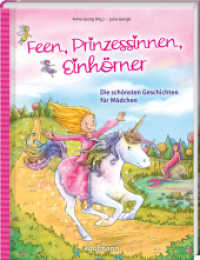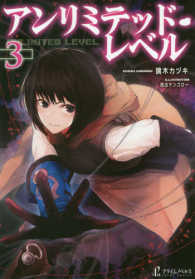- ホーム
- > 洋書
- > 英文書
- > Literary Criticism
Full Description
Music in the Works of F. Scott Fitzgerald illustrates and analyzes the ways in which Fitzgerald integrated music with literature through his entire writing career, from his early Triangle Club lyrics to his later Hollywood screenplays, but most significantly in the novels and short stories for which he is most famous.
Growing up during the first resonating outbursts of popular music—the ragtime era and the jazz age—Fitzgerald filled his fiction with popular songs to express the topics, mores, and energy of his times. As the years passed from World War I to the Roaring Twenties and the Great Depression, these songs brought to his work the varying effects that they had on a mass society: stimulation, romance, nostalgia, and consolation. The songs also contributed to the modernist traits of his style by creating a mixed-media texture and allusive openings to shows or movies in which the songs appeared.
Although popular culture seemed appealing, Fitzgerald constantly worried about how it affected the stature of his works. He carefully distinguished between his popular short stories and his classic novels. But just as songs incorporated popular culture into his works, so other musical qualities, which came to him from classical music by means of poetry, furnished imagery, and structure that enhanced the classic value of his novels.
Even from his later work on screenplays, which he considered a low type of writing, Fitzgerald learned to transform the art and industry of film into fitting material for what could have been his last classic novel, and music provided both popular and classical elements to advance this effort.
Fitzgerald experienced and appreciated the lively new music of his time. In his writing he preserved, organized, and interpreted it for future generations.
Contents
Contents
Introduction
Chapter One: Lyrics and Librettos
The Triangle Shows
The Ragtime Era
The Triangle Shows
Chapter Two: Music, Poetry, and the Novel
This Side of Paradise
Romantic Music
Preparatory to the Great Adventure
The End of Summer
Chapter Three: Books and Magazines
Short Stories I
Flappers and Philosophers
The Jazz Age
Sad Young Men
Chapter Four: From Novel to Musical Comedy
The Beautiful and Damned and The Vegetable
Lyric Tenor
Ragtime Kid
Moral Decline
From President to Postman
Chapter Five: Popular Classic
The Great Gatsby
Musical Sounds
Jazz History of the World
The Sheik of Araby
The Love Nest and Ain't We Got Fun
Three O'Clock in the Morning
Mendelssohn's Wedding March
Beale Street Blues
The Rosary
Chapter Six: Romance and Perfection
Short Stories II
Scandal Detective
Emotional Bankrupt
Chronic Affection
Chapter Seven: Pathology and Decline
Tender Is the Night
Carnival of Affection
Lost Youth
Fading Empire
Chapter Eight: Accompaniments and Soundtracks
Hollywood Writings and The Last Tycoon
Screenplays
Short Stories
The Last Tycoon
Conclusion
Works Cited
Books and Articles
Sheet Music, Collections, Web Recordings
Musical Comedies, Operas, Musical Films, and Longer Pieces
About the Author








